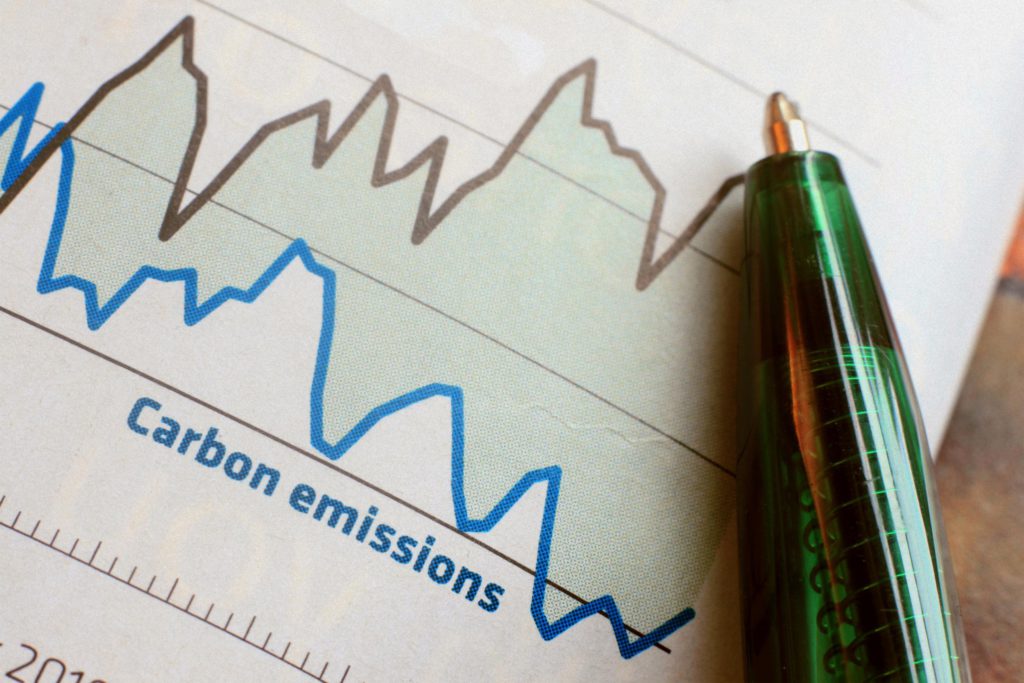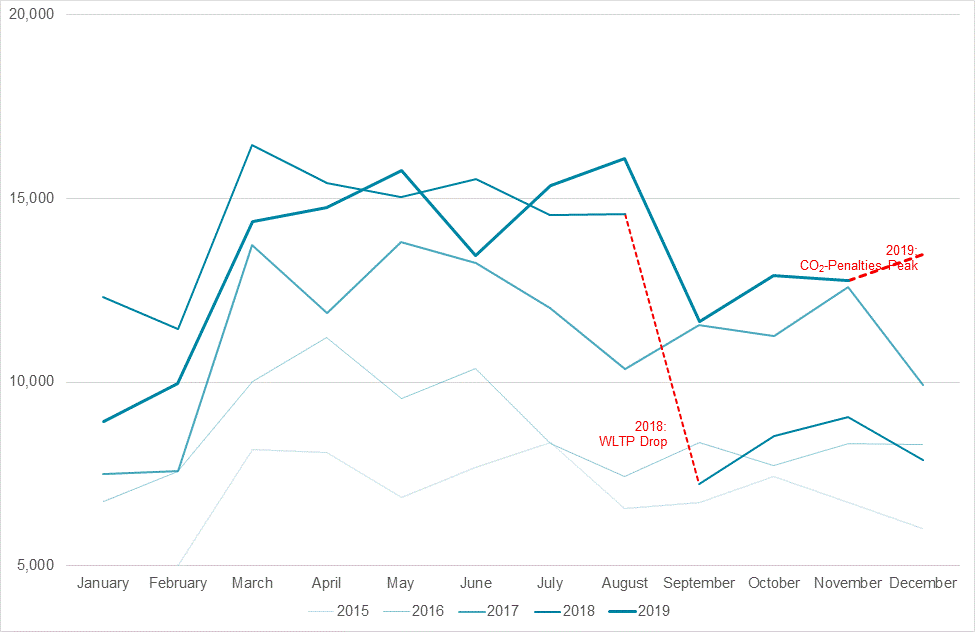CO2 emissions fines are already casting a shadow
29 January 2020

29 January 2020
Things are getting serious this year, writes Andreas GeilenbrÜgge, Head of Valuations and Insights at Schwacke. For 95% of their new cars registered across the EU in 2020 (and all new cars registered in 2021 onwards), manufacturers will have to pay €95 retrospectively per car and gram over their brand-specific emissions target.
The average target for all manufacturers from this year is 95 grams of CO2 per km, depending on their portfolio and “history” – the target for Jaguar Land Rover is over 130 grams for example. And the targets will continue to fall in the coming years.
Of course, the more cars there are registered with CO2 emissions above the target value, the less favourable this is for the manufacturer. As is well known, emissions are heavily dependent on the powertrain and this is why electric vehicles (EVs) without CO2 emissions are popular with manufacturers – especially with the “Supercredit” regulation still being fully applicable.
Despite strong growth, however, EVs are still rare in the context of total sales volumes. The same applies to hybrids, especially plug-ins, with low emissions in the test cycle. Diesels also offer relatively low CO2 values but have not been well received by the customer since the crisis broke. Consequently, petrol cars have gained in popularity but they are the worst performers. Furthemore, regulations such as WLTP and RDE also present challenges for the calculation skills and strategies of the manufacturers.
Was December 2019 really a successful month?
The extent to which this topic has influenced the German market in the past was demonstrated in a concise “anomaly” in December. December registrations were at their highest level for 20 years in 2019, except for in 2006. Petrol-powered passenger cars made a particular contribution to this, increasing by almost 25% year-on-year and accounting for 75% of the total volume difference compared to December 2018. This could simply be explained by the growing popularity of petrol engines. However, diving into the detail presented in the chart below, it quickly becomes clear that there is a strategy behind this performance.
New registrations, petrol cars >200kW, Germany, January 2016 to December 2019
 Source: Autovista Group based on KBA data
CO2 ″Winter sale″
If you consider petrol-powered cars with more than 200kW (approx. 272hp) as an example, in other words the “CO2 bad guys”, the monthly registrations data reveal that that their quantities have steadily grown from year to year.
Admittedly, the number of model ranges with such high-power output has multiplied from around 40 in 2001 to 190 today. However, since 2014 this number has been significantly over 180 and an increased variety of such vehicles does not explain the atypical upward change from November 2019 to the record level in December. We have witnessed a deliberate registration of CO2-heavy models in the non-punitive year of 2019, ahead of the fines kicking in. In the future, we will probably see such interventions and changes – either by industry or initiated by government measures – even more frequently and have to consider them in market observations.
Looking forward, , there could be some great opportunities to acquire powerful young used cars at attractive prices as a result of this 2019 upsurge in their registrations.
Source: Autovista Group based on KBA data
CO2 ″Winter sale″
If you consider petrol-powered cars with more than 200kW (approx. 272hp) as an example, in other words the “CO2 bad guys”, the monthly registrations data reveal that that their quantities have steadily grown from year to year.
Admittedly, the number of model ranges with such high-power output has multiplied from around 40 in 2001 to 190 today. However, since 2014 this number has been significantly over 180 and an increased variety of such vehicles does not explain the atypical upward change from November 2019 to the record level in December. We have witnessed a deliberate registration of CO2-heavy models in the non-punitive year of 2019, ahead of the fines kicking in. In the future, we will probably see such interventions and changes – either by industry or initiated by government measures – even more frequently and have to consider them in market observations.
Looking forward, , there could be some great opportunities to acquire powerful young used cars at attractive prices as a result of this 2019 upsurge in their registrations.
 Source: Autovista Group based on KBA data
CO2 ″Winter sale″
If you consider petrol-powered cars with more than 200kW (approx. 272hp) as an example, in other words the “CO2 bad guys”, the monthly registrations data reveal that that their quantities have steadily grown from year to year.
Admittedly, the number of model ranges with such high-power output has multiplied from around 40 in 2001 to 190 today. However, since 2014 this number has been significantly over 180 and an increased variety of such vehicles does not explain the atypical upward change from November 2019 to the record level in December. We have witnessed a deliberate registration of CO2-heavy models in the non-punitive year of 2019, ahead of the fines kicking in. In the future, we will probably see such interventions and changes – either by industry or initiated by government measures – even more frequently and have to consider them in market observations.
Looking forward, , there could be some great opportunities to acquire powerful young used cars at attractive prices as a result of this 2019 upsurge in their registrations.
Source: Autovista Group based on KBA data
CO2 ″Winter sale″
If you consider petrol-powered cars with more than 200kW (approx. 272hp) as an example, in other words the “CO2 bad guys”, the monthly registrations data reveal that that their quantities have steadily grown from year to year.
Admittedly, the number of model ranges with such high-power output has multiplied from around 40 in 2001 to 190 today. However, since 2014 this number has been significantly over 180 and an increased variety of such vehicles does not explain the atypical upward change from November 2019 to the record level in December. We have witnessed a deliberate registration of CO2-heavy models in the non-punitive year of 2019, ahead of the fines kicking in. In the future, we will probably see such interventions and changes – either by industry or initiated by government measures – even more frequently and have to consider them in market observations.
Looking forward, , there could be some great opportunities to acquire powerful young used cars at attractive prices as a result of this 2019 upsurge in their registrations.